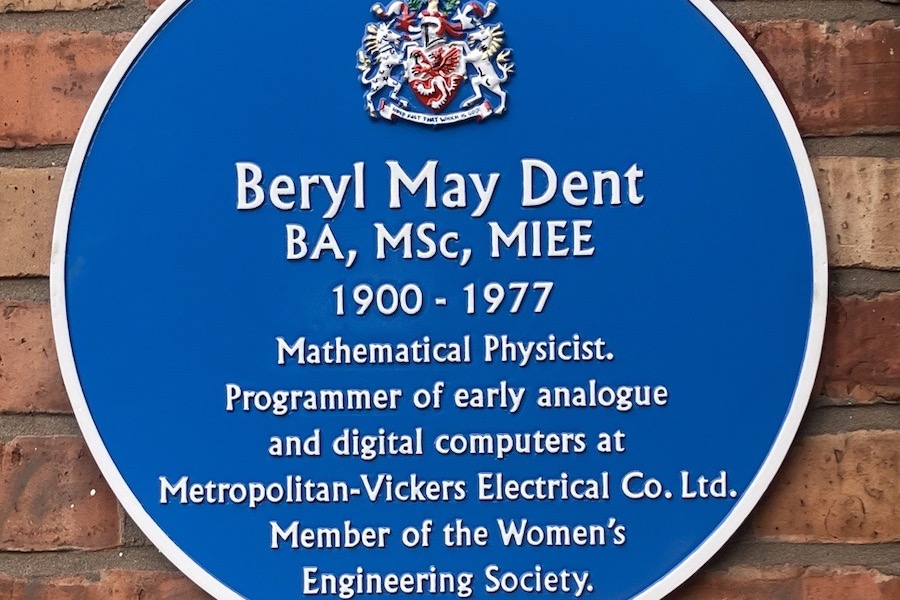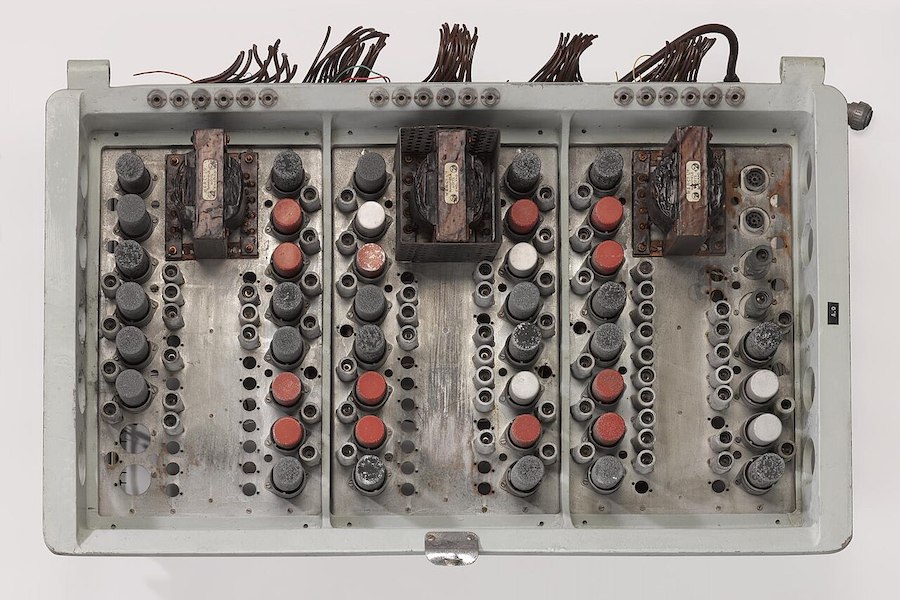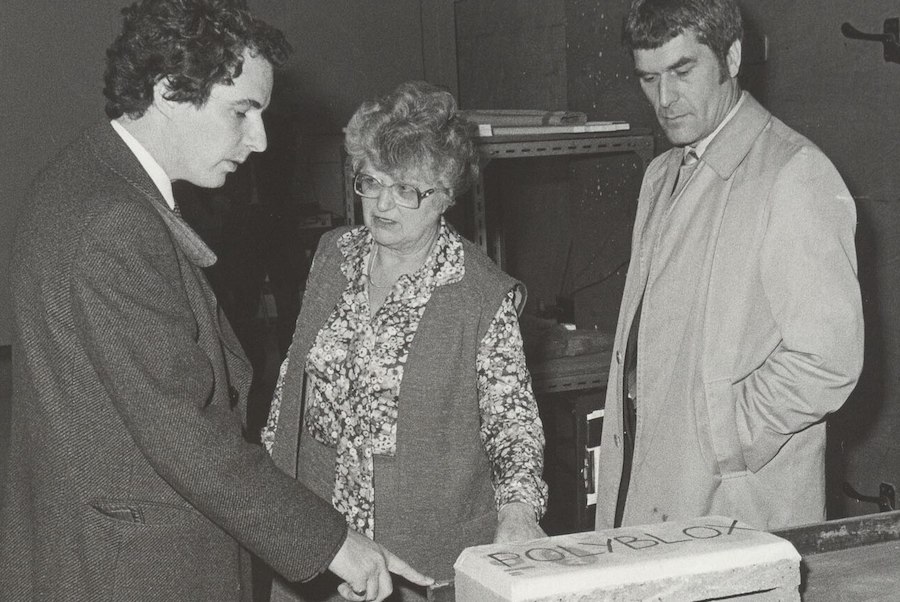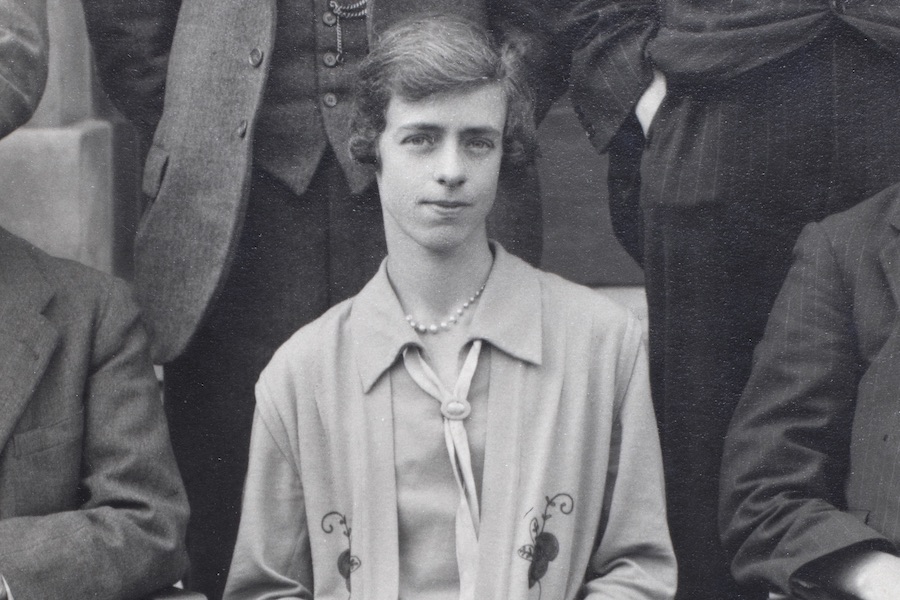This month, Trafford Park gained a permanent reminder of one of its most remarkable, and until now, largely unsung figures.
On 9 August, a blue plaque was unveiled at St Antony’s Heritage Centre to honour Beryl May Dent, a mathematical physicist whose groundbreaking work helped shape the earliest days of computing.
The location, just a short walk from Westinghouse Road, was chosen for its proximity to Metropolitan-Vickers, the industrial giant where Dent spent three decades pushing the boundaries of engineering, mathematics, and technology.
Beryl May Dent
 Beryl May Dent’s plaque
Beryl May Dent’s plaque
The tribute, led by Mayor of Trafford Cllr Jane Brophy, recognised a woman whose work was not only technically brilliant but also quietly revolutionary in proving that women had a rightful place in the laboratories, universities, and research departments of Britain.
“We are paying tribute to another pioneer, a brilliant mind and someone who left an indelible mark on mathematics, engineering and computing,” said Cllr Brophy. “Beryl Dent showed that women deserved equal rights when it came to education, and that their place could be wherever their capabilities took them. They weren’t just the intellectual equal of men, they often surpassed them.”
Metropolitan-Vickers, Trafford
 Metropolitan-Vickers, Trafford
Metropolitan-Vickers, Trafford
Beryl joined Metropolitan-Vickers in January 1930, initially succeeding Lucy Stubbs as technical librarian in the company’s Research and Education Department. Unlike her predecessor, Dent wasn’t hired for her cataloguing skills alone, she brought a formidable background in higher mathematics and physics. At the time, she was one of only two senior women in the research department.
Her role quickly expanded beyond library work. She became honorary secretary of the ASLIB Lancashire and Cheshire branch, reported on the department’s growing collection of engineering volumes and patents, and advised engineers on mathematical accuracy in their published research.
By the mid-1930s, Dent was making her own significant research contributions. In 1935, she developed a reduced major axis method for line fitting in applied mathematics. She carried out advanced calculations on a differential analyser for Oxford researchers investigating electrical phenomena, and collaborated on studies into stress distribution in turbine components.
How Beryl was part of Britain’s scientific elite
These projects brought her into the inner circle of Britain’s scientific elite, attending high-level conferences and editing technical publications. But it was after the Second World War that her career truly accelerated.
In 1944, Dent was placed in charge of the women working in the research department laboratory: a role that combined leadership with hands-on problem-solving. Two years later, she became section leader of Metropolitan-Vickers’ brand-new computation section, right as electronic computing was emerging from theory into reality.
 Components of the Ferranti Mark 1
Components of the Ferranti Mark 1
Her timing could not have been better. The University of Manchester had just developed the Ferranti Mark 1, the world’s first commercially available general-purpose electronic computer. Dent and her colleague Brian Birtwistle saw its potential immediately. Together, they wrote programs that transformed the speed of engineering calculations. One particularly complex job that had previously taken three months to complete could now be done in just five hours, a leap forward that showcased the enormous value of digital computing in industrial design.
Dent’s skill was in bridging worlds: she could understand the theoretical underpinnings of high-speed computation while translating them into practical tools that solved real-world engineering challenges.
Expanding the frontiers of computer science
 Audrey Stuckes
Audrey Stuckes
Throughout the 1950s, she applied computer methods to problems in nuclear power, electronics, and materials science. She collaborated with Audrey Stuckes, later head of physics at the University of Salford, on research into semiconductor heating effects. She performed Fourier analyses to optimise cyclotron resonance in particle accelerators and carried out complex bending-moment calculations for reactor components.
Even in the final year before her retirement, Dent was breaking new ground. In 1959, she modelled a proposed Zeta circuit on the Ferranti Mark 1, a job so large it consumed 80 hours of precious machine time, costing around £2,000 (the equivalent of nearly £60,000 today).
When she retired in May 1960, Isabel Hardwich, later president of the Women’s Engineering Society, succeeded her as section leader. Dent’s career had spanned the most transformative decades in British industrial science, from pre-war mechanical calculators to post-war electronic computing.
Life beyond the lab
Dent’s influence wasn’t confined to the laboratory. Living in Stretford during her Metropolitan-Vickers years, she served as school manager at St Matthew’s Church of England Primary School from 1956 to 1962. She was known locally for her commitment to education and community life.
In 1962, she moved to Sussex with her mother and sister, remaining active in the Christian community as treasurer and electoral officer of the local parish organisation. She died on 9 August 1977, exactly 47 years before the unveiling of her blue plaque.
St Antony’s Heritage Centre
The setting for the plaque, St Antony’s Heritage Centre, is symbolic. It stands close to where Metropolitan-Vickers once dominated the skyline of Trafford Park, its research department buzzing with engineers, scientists, and the emerging figures of Britain’s computing age.
You can find out more about St Anthony’s Heritage Centre by clicking here
Today, the company name may be gone, but its contributions to electrical engineering and computer science remain woven into Manchester’s industrial story. Dent’s work on the Ferranti Mark 1 was a crucial part of that legacy – proving not only the utility of electronic computing but also the importance of having skilled women at the forefront of technological change.

